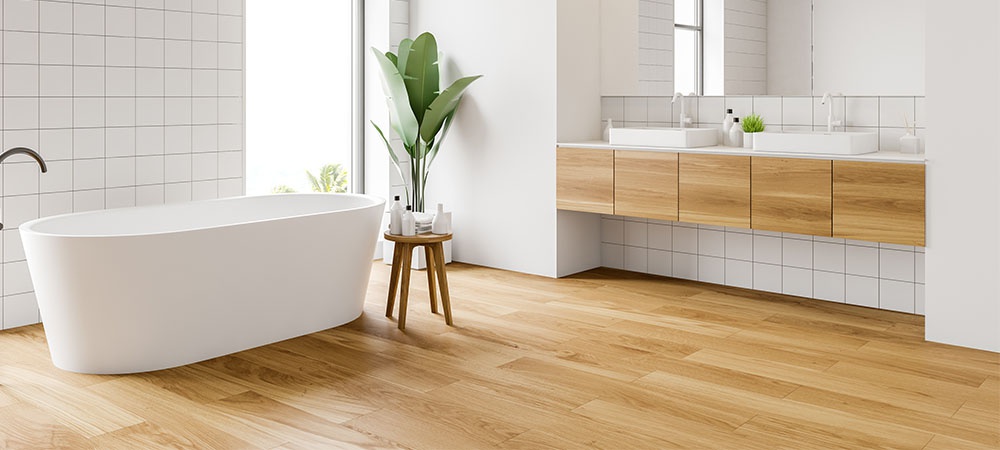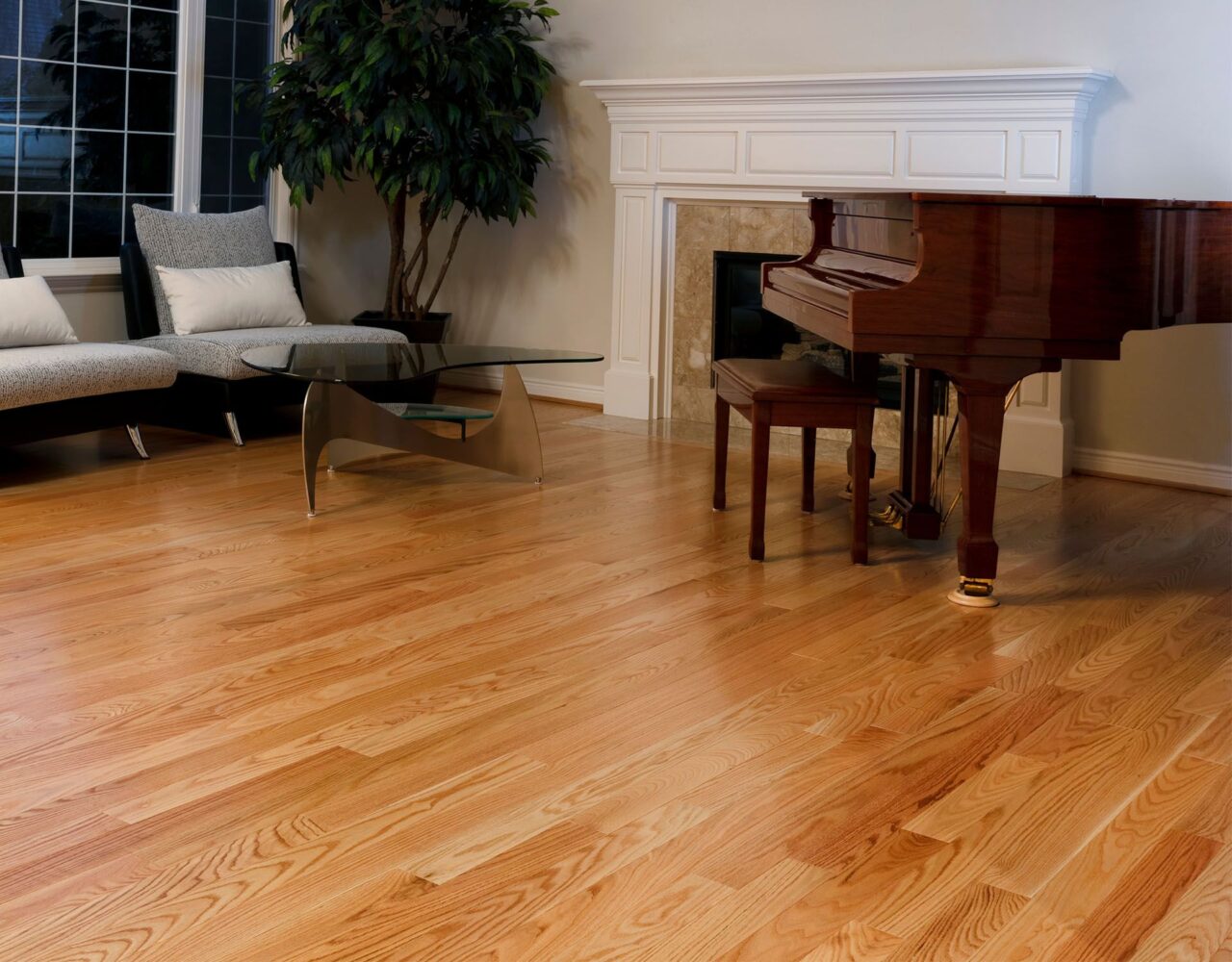Solid and engineered hardwood are popular flooring options among Toronto homeowners. They offer homeowners a perfect choice that meets their varying flooring needs, likes, and preferences. These two alternatives are essentially the same except for how they are made. Therefore, it’s difficult for the untrained eye to differentiate them after installation because they look identical.
While these two hardwood alternatives are essentially the same, they differ in many outstanding ways. These differences also affect their pricing, making solid hardwood the more expensive choice. Do you want to learn why and how they differ in price? Keep reading to learn more and make an informed choice.
What is Engineered Hardwood Flooring?
Let’s start by defining engineered hardwood flooring before examining its pricing differences with solid hardwood. As the name suggests, engineered hardwood flooring is a type of hardwood flooring that is industrially engineered.
This flooring isn’t fake hardwood but an actual hardwood surface plank with industrially assembled components or base layers. These internal layers are made from various materials like plywood, hevea, and eucalyptus that are fixed to wear the coating at a 90-degree angle.
Its outer layer comes from different hardwood species like walnut and oak, measuring between 2.5mm and 6mm in thickness. This outer layer makes the hardwood floor stronger and more stable. Its plank width, thickness, and length vary depending on your flooring requirements.
Engineered hardwood flooring’s finishes also differ. You can have them in oiled, lacquered, brushed, and unfinished forms. Choosing an unfinished building requires protection with lacquer or oil after its installation.
Advantages of Engineered Hardwood Flooring
Engineered hardwood flooring has unique advantages that make it suitable for various applications. Here are the leading ones.
- It is cheaper than solid hardwood flooring.
- After installing it, it’s nearly impossible for the untrained eye to differentiate it from solid hardwood because it has a real hardwood layer on top.
- It has more versatile applications because it’s more resilient to temperature and humidity changes than solid wood flooring.
- It’s stable, making it suitable for installation on underlays, underfloor heating, and in conservatories.
- If necessary, you can fix it on the subfloor.
- It is quick and easy to install.
- It gives you a wide pool of choices regarding wood species, styles, colors, finishes, and plank sizes.
- You may sand the top layer of natural wood and refinish engineered hardwood flooring.

What is Solid Hardwood?
As the name suggests, solid hardwood flooring is a solid piece of natural hardwood. It’s cut from a tree trunk and made into a flooring plank by machine. This wooden flooring is available in different wood species, plank sizes, and finish choices.
You may also go for unfinished solid hardwood flooring that allows you to install the floor and then match it with your preferred color stain and style. A solid hardwood floor is luxurious, making it more popular in homes.
This hardwood flooring choice should be fitted into position during installation because it doesn’t float over overlays. Otherwise, it will lack the stability it needs by being fixed to subfloors.
Advantages of Solid Hardwood Flooring
Solid hardwood flooring has numerous advantages, making it a sought-after choice by homeowners who like wooden flooring. Below are some of its benefits.
- It has a traditional and luxurious look.
- Its planks are cut from single solid hardwood pieces.
- You can sand and refinish it several times whenever necessary.
- It lasts more than twice its engineered alternative.
- It comes in different wood species, ranging from light to dark, with various patterns and grains.
- Its planks are available in random lengths and various widths to let you select flooring that suits your environment.
- Its tongue and groove fitting system is the most traditional and established installation method.
- You may choose between unfinished or prefinished planks.
Cost Differences Between Solid and Engineered Hardwood Flooring
We have examined these hardwood flooring options’ core advantages and disadvantages. But what are their pricing differences? Here are the various pricing differences between the two.
First, it’s worth noting that we can categorize the final pricing between solid and engineered hardwood into three tiers. These categories are: low-range which costs between $30 and $42; mid-range, which sells between $42 and $54; and high-range which costs between $54 and $108.
- Low-range: This tier comprises 3-ply engineered flooring is a cost-effective alternative for those who can’t afford solid hardwood flooring.
- Mid-range: This range comprises the 5-ply engineered hardwoods and the more usual solid hardwood floor species like oak and elm.
- High-range: This tier comprises higher-end hardwood floors such as 9-ply engineered floors and the more exotic species of solid hardwoods like black walnut.
Pricing Averages
Below are the selling averages of solid and engineered hardwood flooring.
- Solid Hardwood
Pre-finished solid hardwood flooring averages about $10 per square foot, with a range of $8 to $15 per square foot, including installation.
- Engineered Hardwood
Engineered hardwood flooring is slightly cheaper than solid hardwood. Typically, its pricing ranges between $2.50 and $10 per square foot. Most engineered hardwood types cost between $4 and $7 per square foot.
Overall, solid hardwood flooring is more expensive than engineered alternatives. However, some thicker engineered hardwood products can be expensive, especially those with a higher refinishing and sanding scope. Additionally, solid and engineered hardwood flooring products have an installation cost range of $3 to $10 per square foot. This labor cost depends on prevailing labor costs in your locality and a room’s design complexity.

Factors to Consider When Choosing Between Solid and Engineered Hardwood Flooring
Now you have the pricing differences at your fingertips. But pricing alone is not enough to choose one flooring option over the other. You must still consider other factors to get the best value for your money. Below are the top four factors to consider when choosing between solid and engineered hardwood flooring.
- Installation Space
You have to factor in your floor’s location before settling for either solid or engineered hardwood flooring. Solid hardwood flooring is suitable for high-traffic locations because you can easily sand it down and refinish it several times.
You should consider it if you want to floor living spaces or entrance hallways. It’s also a perfect choice for dining rooms and bedrooms. However, it’s not the best bet for installing in high-temperature and moisture areas like basements and kitchens.
Inversely, you can install engineered hardwood floors in any room. This option is ideal for areas with high humidity and temperature levels. For instance, you can use it in the kitchen, rooms with much glazing, and conservatories. This hardwood flooring option is also perfect for withstanding mild environment changes like air, temperature, and moisture.
- Underfloor Heating
You should also consider floor underheating before choosing one flooring option over another. If you intend to use underfloor heating, you should consider installing engineered hardwood. This option is ideal because it safely transfers heat to your floor’s surface.
This hardwood flooring can cope with constant temperature changes and react well. It expands and contracts and is dimensionally stable enough; thus, heat doesn’t damage it from beneath.
- Your Budget
Your budget is another factor to consider when choosing between these two hardwood alternatives. Opting for engineered hardwood flooring is best for you if you have a lean budget. It’s cheaper than solid hardwood because of the amount of solid wood used in each flooring plank.
Solid hardwood can also be expensive because it comes from rare species. For instance, solid hardwoods from rare African and South American species are very costly.
However, don’t assume that every type of engineered hardwood is automatically cheaper. You have to pay attention to each product’s pricing since some forms of engineered flooring can be expensive if their:
- Plank sizes are very wide
- Top layers come from exotic hardwood species
Therefore, it’s prudent to counter check these facts before choosing engineered hardwood.
- Durability
Lastly, durability is another key factor to consider when choosing between these two hardwood products. Solid hardwood flooring has a longer lifespan than its engineered alternative because it’s solid and pure throughout. Therefore, it lasts longer with minimal maintenance.
You can also refinish and sand solid hardwood more times than engineered hardwood. These hardwoods have varying durability levels. Hickory and oak are the best for resisting dents, making them ideal for high-traffic rooms in homes with children and pets.

Talk to Us About Your Flooring Needs Today
Solid and engineered hardwood flooring are popular products for many homeowners who love wooden floors. They have unique advantages and shortcomings that make them ideal for use in different locations. So, you only need to define your needs before choosing the appropriate product for your flooring needs.
Their pricing also varies based on various factors such as durability and species rarity. Overall, solid hardwood is the more expensive and durable choice.
Which hardwood flooring would you like to install in your home? You can always contact us for all your flooring needs in and around Toronto. Our lines are open; call us today for a free consultation and estimate.

